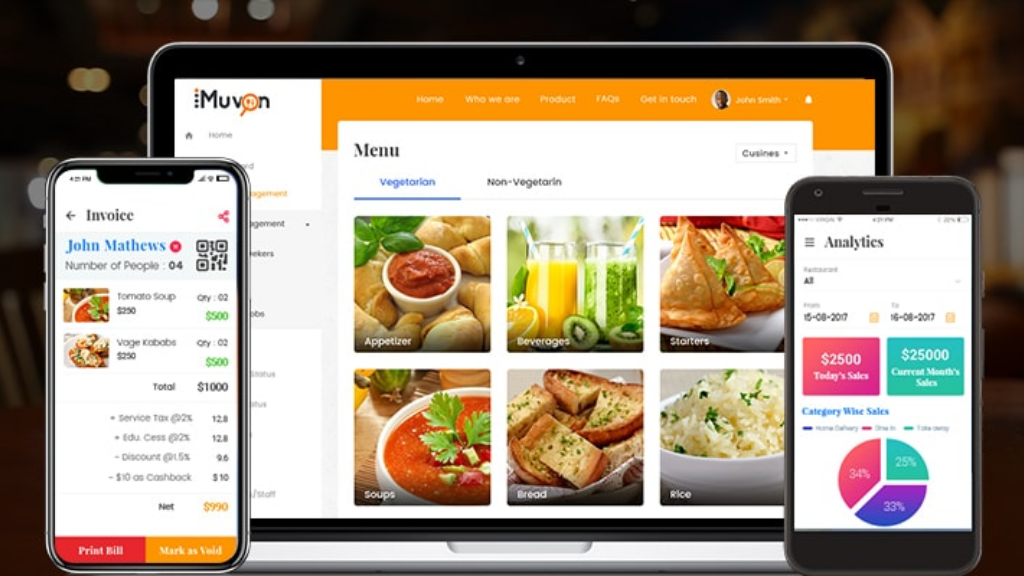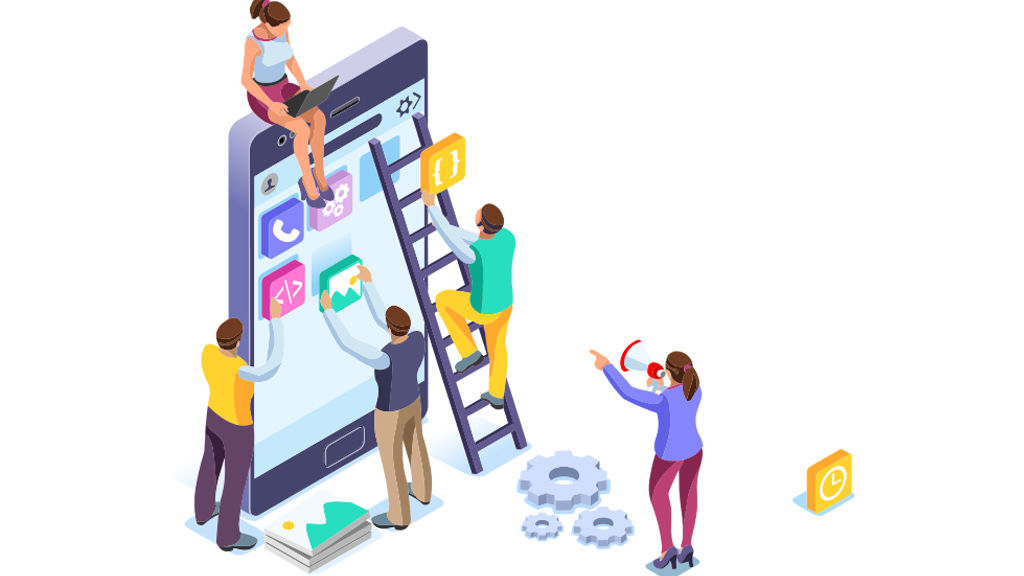Don't miss the chance to work with top 1% of developers.
Sign Up Now and Get FREE CTO-level Consultation.
Confused about your business model?
Request a FREE Business Plan.
How to Build a Minimum Viable Product?
Table of contents
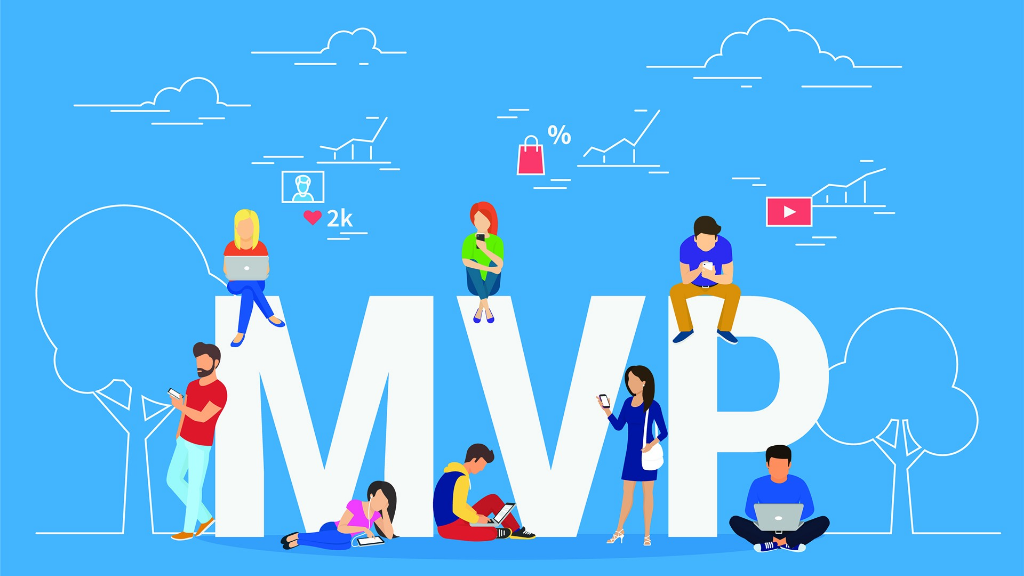
The world we are living in is an idea world. An idea can either make or break a kingdom. If it gets successful you are at the top of this world and if it fails your investment will be in jeopardy. So, what is the convenient way in which you can execute your idea without putting a lot of your investment at stake? Simple, build a Minimum Viable Product (MVP).
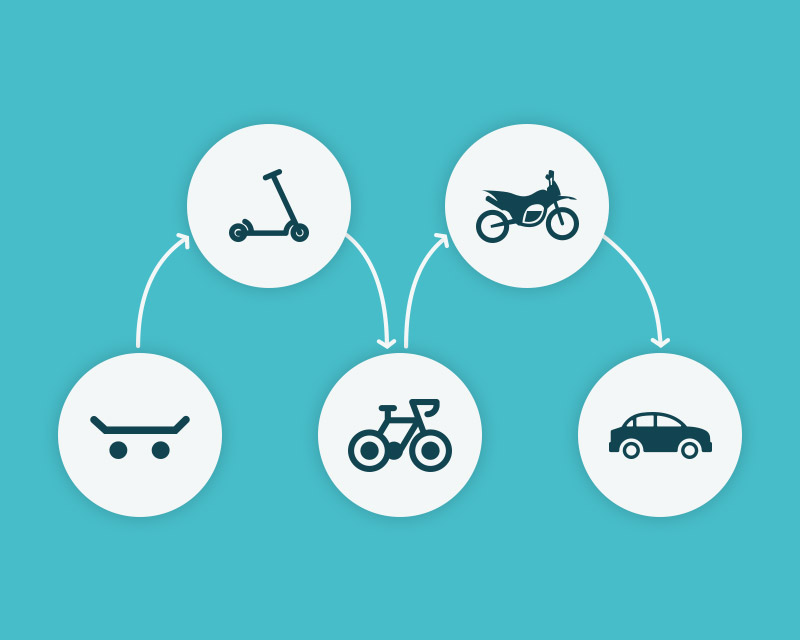
What is a Minimum Viable Product (MVP) in Mobile Application Development?
In mobile app development, MVP is an initial but essential version of an application. MVP app development is basically a process where a new app is created with its core functionalities to test how the target audience would react to it. Then the actual app with a full set of functionalities is developed after feedback is received from the early adopters.
MVP helps in planning, designing and testing the final product. It plays an imperative role in designing and development. A few organizations have entanglements while trying to develop a minimum viable product for a mobile application or a web. That is the reason it is vital to understand the development procedure of an MVP.
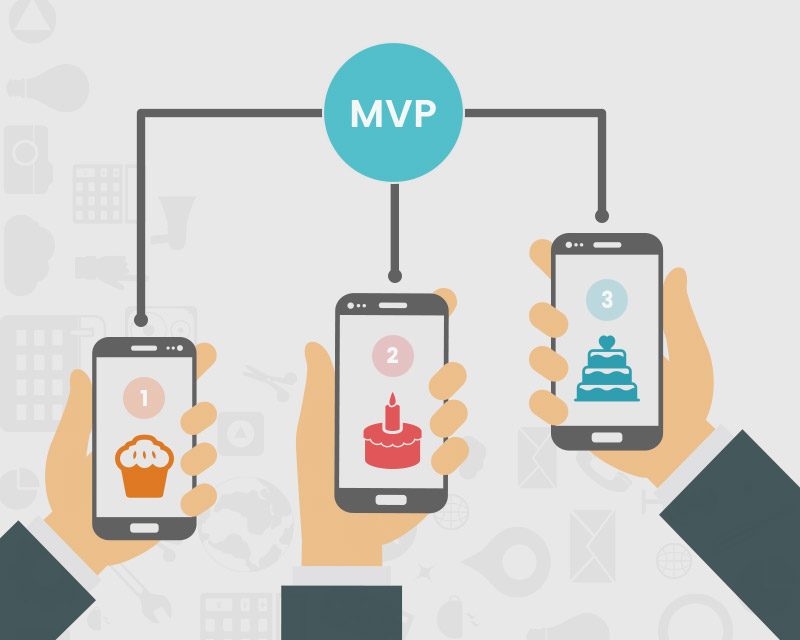
Since we’ve now built up what an MVP is, let’s find out how to develop it in a few steps.
How to develop a Minimum Viable Product?
The minimum viable product is tied around testing your ideas and finding out what precisely will work to appropriately focus on your clients, and guaranteeing that the MVP addresses their issues. If everything has been done effectively, then it will be very easy to conclude the item and market it later.
Here is how you can build an MVP:
Step 1: Evaluate your app idea
The initial step is to evaluate your application idea. Try to think from your customer’s perspective for what reason do you require this application or product? Or, how it can help you? Answering these questions will enable you to understand the fundamental objective of your product and find the best answer for your future clients’ real requirements.
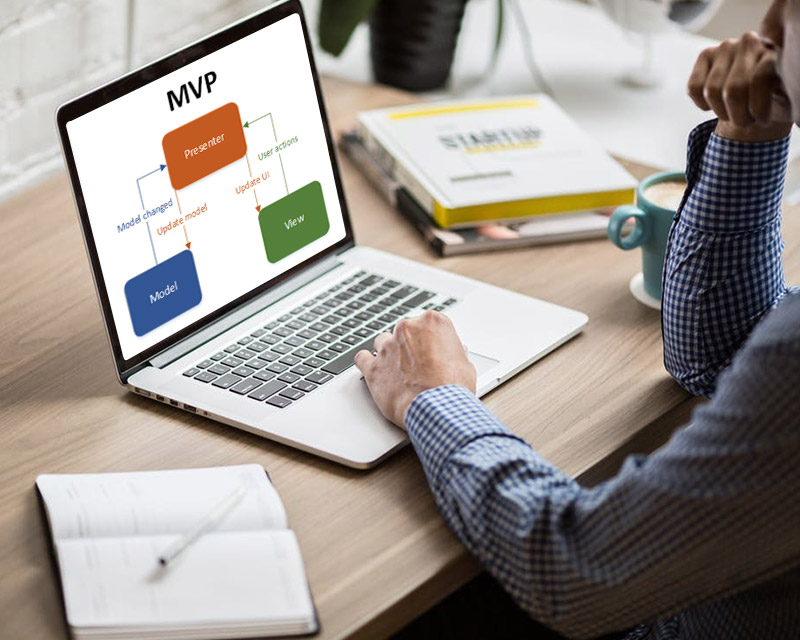
Step 2: Keep an eye on competitors
Obviously, you will need to do a competitor analysis if there are as of now comparative products available in the market. However, in some cases, entrepreneurs ignore competitor analysis because of their confidence in their idea’s uniqueness.
Remember, that even if you don’t think you have any direct competitor, your confidence in the uniqueness of your idea isn’t adequate justification for unquestionably putting up your product in the market. Competitor analysis is vital. So, do it and analyze what your competitors are doing and what are they missing.
Stage 3: Analyze your idea
What benefits does your product offer to its clients? How might it profit them? For what reason would they purchase your product? These are essential questions you must ask yourself before you do any investment in your idea.
You should also be clear about the fundamental estimations of your product. Minimum viable product development means providing value to the people, first layout them and based on that develop your product.
Step 4: Define the User Flow
You must have heard about Zappos, one of the most amazing online shoe stores. It also started with an MVP. Let us have a look at Zappos user flow. Keep in mind that when you begin characterizing the user flow for your product, you must focus specifically on its essential objective. As Zappos is an online shop that offers shoes, its primary objective is to enable clients to purchase shoes on the web.
To characterize the basic user flow we should first know the process stages. This is very simple; all you need is to define the process through which a user can accomplish what he is on your app or site. Therefore, you should think less about the specific features and focus more on the fundamental steps. The basic functions will include:
• Find shoes
• Purchase shoes
• Manage orders
• Receive orders
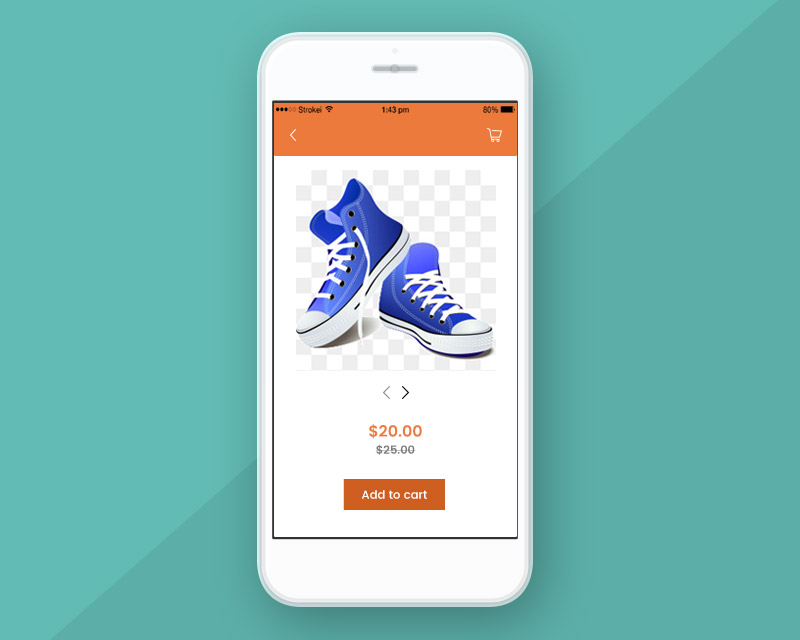
These are the kinds of goals your end-clients will have when they utilize your product. When all these process stages are characterized, we would then be able to characterize features for each stage.
Step 5: Figure out the fundamental features and organize them
As a matter of first importance, list every one of the features that you need to incorporate into your product before you begin developing the minimum viable product; and, once the development procedure is finished, check it out with the list. When you have a rundown of functions for every stage, then you should prioritize them. To do this, make inquiries, for example, – What do my clients need? Am I offering them something useful? And so on.
Next, categorize all the rest of the features based on the priority. When you have a list of all the features with their priority on them, you can characterize their scope for the first version of the product, and move to building an MVP. Here is an example of what your list should look like:
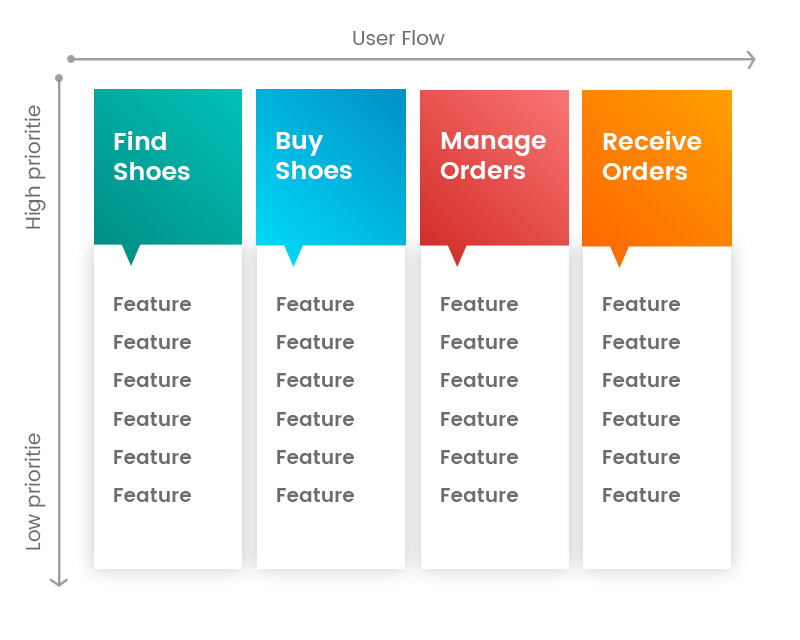
If you need to analyze how your future product will look, you can even develop an MVP’s prototype. When you have settled on the fundamental features and have an idea about the market needs, you can develop your MVP mobile app or product. Remember that a prototype isn’t of lower quality than a final product, and still needs to satisfy your client’s needs. So, it must be very easy to utilize, suitable and engaging for your clients.
Step 6: Learn and then improve
So, now you have the scope of the work defined and your product is moved to the development stage. Put the focus on testing and learn where it needs improvement. Conduct the first testing stage.
Analyze every aspect thoroughly once you launch the product; for example, collect your users’ feedback. With their reviews you can decide whether the product is satisfactory, is it solving the problems of users, and so on.
Keep in mind that users tell us where the product is lacking and what functions are not required. When you get the feedback from the clients, begin improving your product, again do testing, learn, and figure out the quality, and after that test once more, and the procedure goes ahead until the point when it is finalized.
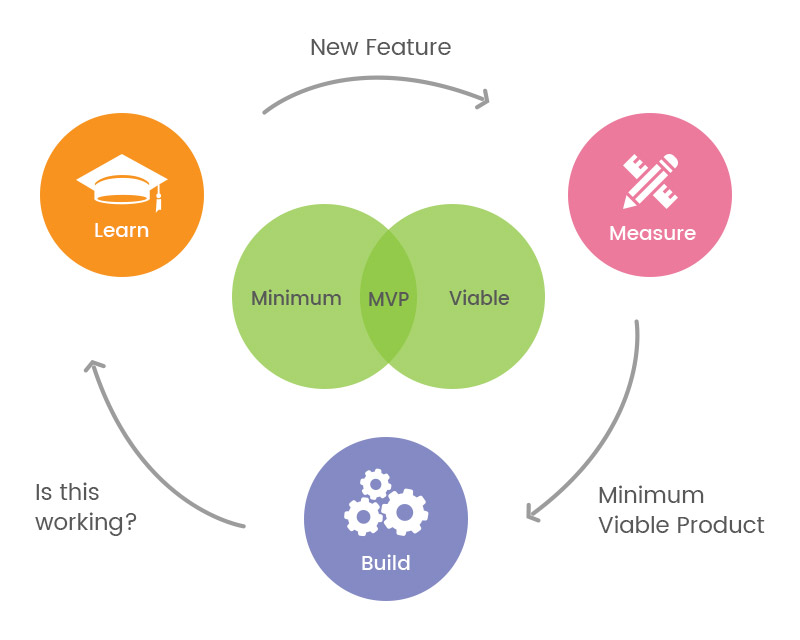
Final Words
A minimum viable product is meant for solving the user’s main problem, by distinguishing the pain points and after that concentrating on offering a feasible solution. The most ideal approach to build an MVP is to utilize a manual-based approach, with email lists, and landing pages. All you require is planning, designing, developing, testing, and promoting the product within a predetermined period. This helps in boosting your project’s value to potential clients.
Need any assistance in building a minimum viable product for your venture, or need a consultation? Email us at sales@apptunix.com.
Rate this article!
(15 ratings, average: 4.87 out of 5)
Join 60,000+ Subscribers
Get the weekly updates on the newest brand stories, business models and technology right in your inbox.

Humane yet subtle, Naiya is a girl full of ideas about almost everything. After earning a bachelor’s degree in computer science and engineering, she decided to merge her technical knowledge with her passion for writing – to accomplish something interesting with the fusion. Her write-ups are usually based on technology, mobile apps, and mobile development platforms to help people utilize the mobile world in an efficient way. Besides writing, you can find her making dance videos on Bollywood songs in a corner.

Telemedicine 2.0 - A Comprehensive Guide On What Healthcare Providers Need To Know?
Discover how the latest advancements like Artificial Intelligence in telemedicine are reshaping patient care. This comprehensive resource offers insights into the key trends and innovations driving this shift, providing valuable knowledge for healthcare professionals looking to stay ahead.
Download Now!Don't Know Much
About Technology?
Let our experts help you decide the right tech stack for your idea.
